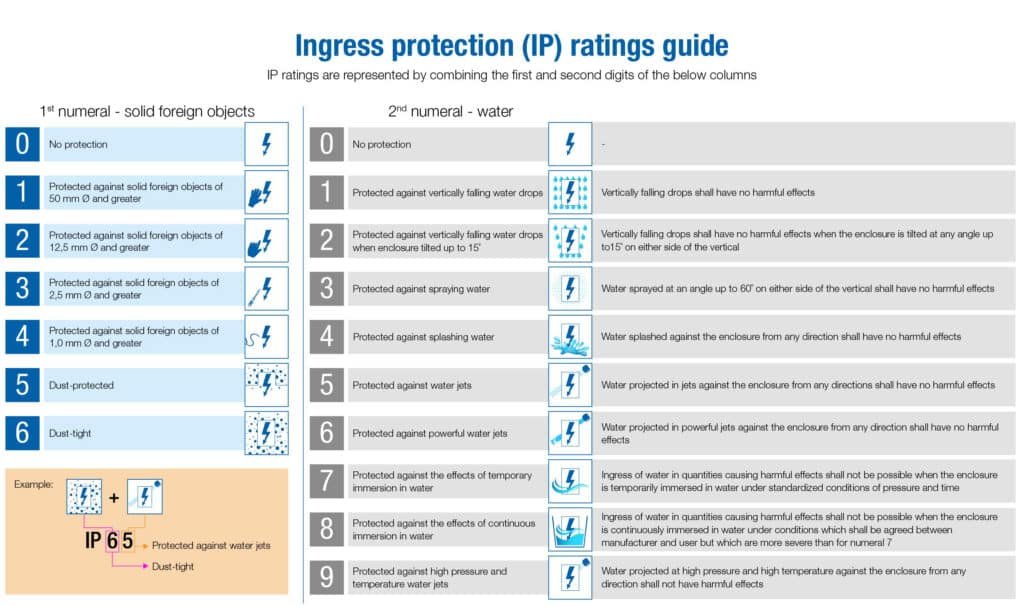
Confused about the latest IEC 605291 updates? You’re not alone. These changes directly impact how we select and certify cable glands in 2025.
The 2025 IEC 60529 revision introduces stricter testing protocols for IP ratings2, enhanced requirements for cable gland sealing performance, and new certification procedures that affect procurement decisions across industrial applications.
Last month, I had a heated discussion with David, our longtime client from Germany. He was frustrated because his previous cable gland supplier couldn’t meet the updated certification requirements. This conversation made me realize how critical it is for everyone to understand these changes.
Table of Contents
- What Are the Key Changes in IEC 60529 2025 Edition?
- How Do These Updates Affect Cable Gland Selection and Testing?
- What Should You Do to Ensure Compliance with New Requirements?
- Why Are These Changes Important for Industrial Applications?
What Are the Key Changes in IEC 60529 2025 Edition?
Understanding these updates is crucial for your next procurement decision. The changes aren’t just paperwork – they affect real performance.
The 2025 revision introduces enhanced water ingress testing, stricter dust protection criteria, updated temperature cycling3 requirements, and mandatory documentation for cable gland assemblies with specific cable types.
Enhanced Water Ingress Testing Protocols
The most significant change involves IPX6 and IPX7 testing procedures. Previously, manufacturers could use simplified test setups. Now, the standard requires:
- Extended duration testing: Water spray tests now run for 10 minutes instead of 3 minutes
- Multiple angle testing: Cable glands must be tested at 6 different orientations
- Temperature variation: Tests must be conducted at both ambient and elevated temperatures (up to 85°C)
I remember Hassan, our chemical plant client from UAE, telling me: “Chuck, we’ve had three cable gland failures this year due to water ingress. These new standards should prevent such issues.”
Stricter Dust Protection Criteria
For IP5X and IP6X ratings, the updates include:
| Previous Standard | 2025 Update | Impact |
|---|---|---|
| 8-hour dust chamber test | 16-hour continuous exposure | Double testing duration |
| Single particle size | Multiple particle size ranges | More comprehensive protection |
| Visual inspection only | Functional testing required | Performance verification |
Updated Documentation Requirements
The new standard mandates detailed documentation for:
- Cable compatibility matrices4
- Installation torque specifications
- Environmental condition limitations
- Maintenance intervals and procedures
How Do These Updates Affect Cable Gland Selection and Testing?
These changes directly impact your purchasing decisions and supplier qualification process. Not all manufacturers are ready for these requirements.
Cable gland selection now requires verification of updated test certificates, compatibility documentation with specific cable types, and confirmation of manufacturer compliance with new testing protocols before procurement approval.
New Certification Timeline
Here’s what you need to know about certification validity:
- Existing certificates: Valid until December 2025
- New products: Must comply immediately
- Re-certification: Required for all products by January 2026
Testing Cost Implications
The enhanced testing requirements have increased certification costs by approximately 30-40%. However, this investment ensures better long-term reliability.
At Bepto, we’ve already upgraded our testing facility to meet these requirements. Our investment in new equipment means we can provide you with compliant products without delays. 😉
Supplier Qualification Checklist
When evaluating suppliers, verify they can provide:
- Updated test reports following 2025 protocols
- Cable compatibility matrices for your specific applications
- Installation guidelines meeting new documentation standards
- Traceability systems for quality control
What Should You Do to Ensure Compliance with New Requirements?
Taking action now prevents costly delays and compliance issues later. Here’s your practical roadmap.
Immediate actions include auditing current cable gland inventory, updating procurement specifications to reference IEC 60529:2025, requesting updated certificates from suppliers, and planning replacement schedules for non-compliant products.
Immediate Action Plan
Phase 1 (Next 30 days):
- Inventory audit of existing cable glands
- Contact current suppliers for compliance status
- Update internal specifications
Phase 2 (Next 90 days):
- Request updated certificates and documentation
- Evaluate alternative suppliers if needed
- Plan replacement schedule for critical applications
Phase 3 (By end of 2025):
- Complete transition to compliant products
- Update maintenance procedures
- Train installation teams on new requirements
Working with Bepto During This Transition
We understand these changes create challenges. That’s why we’re offering:
- Free compliance assessment for your current cable gland applications
- Updated certificates for all our products by Q2 2025
- Technical support during the transition period
- Competitive pricing despite increased testing costs
David recently told me: “Chuck, working with Bepto during this transition has been seamless. Your proactive approach saved us months of headaches.”
Why Are These Changes Important for Industrial Applications?
These updates aren’t bureaucratic red tape – they address real-world failure modes that cost companies millions annually.
The 2025 updates target the three leading causes of cable gland failures: inadequate water protection in harsh environments, insufficient dust sealing in industrial settings, and poor long-term performance under temperature cycling conditions.
Real-World Impact Examples
Chemical Processing Industry:
- Previous standard: 15% failure rate in outdoor installations
- Expected improvement: 60% reduction in water-related failures
Marine Applications:
- Enhanced salt spray resistance testing5
- Improved correlation with actual service conditions
Renewable Energy Sector:
- Better performance prediction for 25-year solar installations
- Reduced maintenance requirements
Cost-Benefit Analysis
While initial costs increase, the long-term benefits include:
- Reduced maintenance: Fewer emergency repairs
- Extended service life: Better material selection
- Lower total cost: Improved reliability over product lifetime
- Enhanced safety: Better protection in critical applications
Hassan shared with me: “The upfront investment in compliant cable glands is nothing compared to the cost of a plant shutdown due to seal failure.”
Conclusion
The IEC 60529 2025 updates represent a significant step forward in cable gland reliability and performance standards.
FAQs About IEC 60529 2025 Updates
Q: When do I need to comply with the new IEC 60529 requirements?
A: New products must comply immediately, while existing installations have until December 2025. However, I recommend starting your transition planning now to avoid last-minute rushes and potential supply shortages.
Q: Will my current cable glands still be acceptable after 2025?
A: Existing installations can continue operating, but new installations and replacements should use products certified to the 2025 standard. For critical applications, consider upgrading proactively.
Q: How much will the new certification requirements increase product costs?
A: Expect 5-10% price increases due to enhanced testing requirements. However, improved reliability typically provides better long-term value through reduced maintenance and longer service life.
Q: Can I still use my existing supplier if they haven’t updated their certifications?
A: You can continue using existing stock, but for new orders, ensure your supplier provides updated certificates. At Bepto, we’re already compliant and ready to support your transition.
Q: What’s the biggest risk of not updating to compliant cable glands?
A: The main risks include potential compliance issues during audits, reduced reliability in harsh environments, and possible insurance complications if failures occur with non-compliant products in critical applications.
-
Review the official overview of the IEC 60529 standard for Ingress Protection (IP) ratings from the International Electrotechnical Commission. ↩
-
Understand the meaning of each digit in the Ingress Protection (IP) rating system with this detailed chart. ↩
-
Learn about the purpose and methodology of temperature cycling tests used to assess product reliability. ↩
-
See a guide on how to develop and use cable compatibility matrices for electrical system design. ↩
-
Explore the procedure for salt spray (fog) testing, a standardized method for evaluating corrosion resistance. ↩


